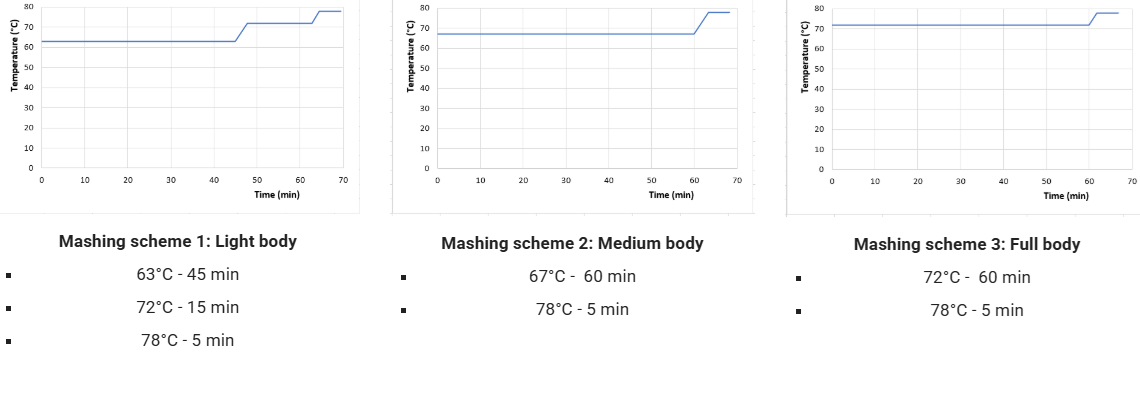Creating your first mashing schemeUpdated 6 months ago
The mashing process has a huge impact on the beer's outcome. Depending on the temperature and duration of each mashing step, it could become a heavy or light beer.
To understand the exact effect of every temperature and duration of a step you can check out the article about Understanding Alpha and Beta amylse on the help center.
In short, the alpha amylase enzyme, will break down starch into large unfermentable sugars, giving mouthfeel and richness as result, the beta amylase will break down starch into fermentable sugars, giving alcohol production as the main result.
Below you can find standard mashing schemes, depending on the type of beer you are going to brew.
 For a light-bodied beer, the step of 145°F / 63C° is long. This conversion of starch to soluble/fermentable sugars reduces the amount of large sugars left for the body.
For a light-bodied beer, the step of 145°F / 63C° is long. This conversion of starch to soluble/fermentable sugars reduces the amount of large sugars left for the body.
For a medium-body beer, the step 152°F / 67C°/ is maintained, also known as one-step mashing. Both enzymes are active at this temperature and will create a balanced beer with a medium body.
For a full body, the step os /161°F / 72C° is maintained, resulting in most of the starch being converted into larger chains, giving a full body.
EXAMPLE 1
When looking for an American Pale Ale style beer, you are leaning towards a light to medium body; hence, mashing scheme 1 or 2 would be best.
EXAMPLE 2
When looking for a Belgian Blonde Ale style beer, you are leaning towards a medium-high/high body; hence, either mashing scheme 2 or 3 would be best.